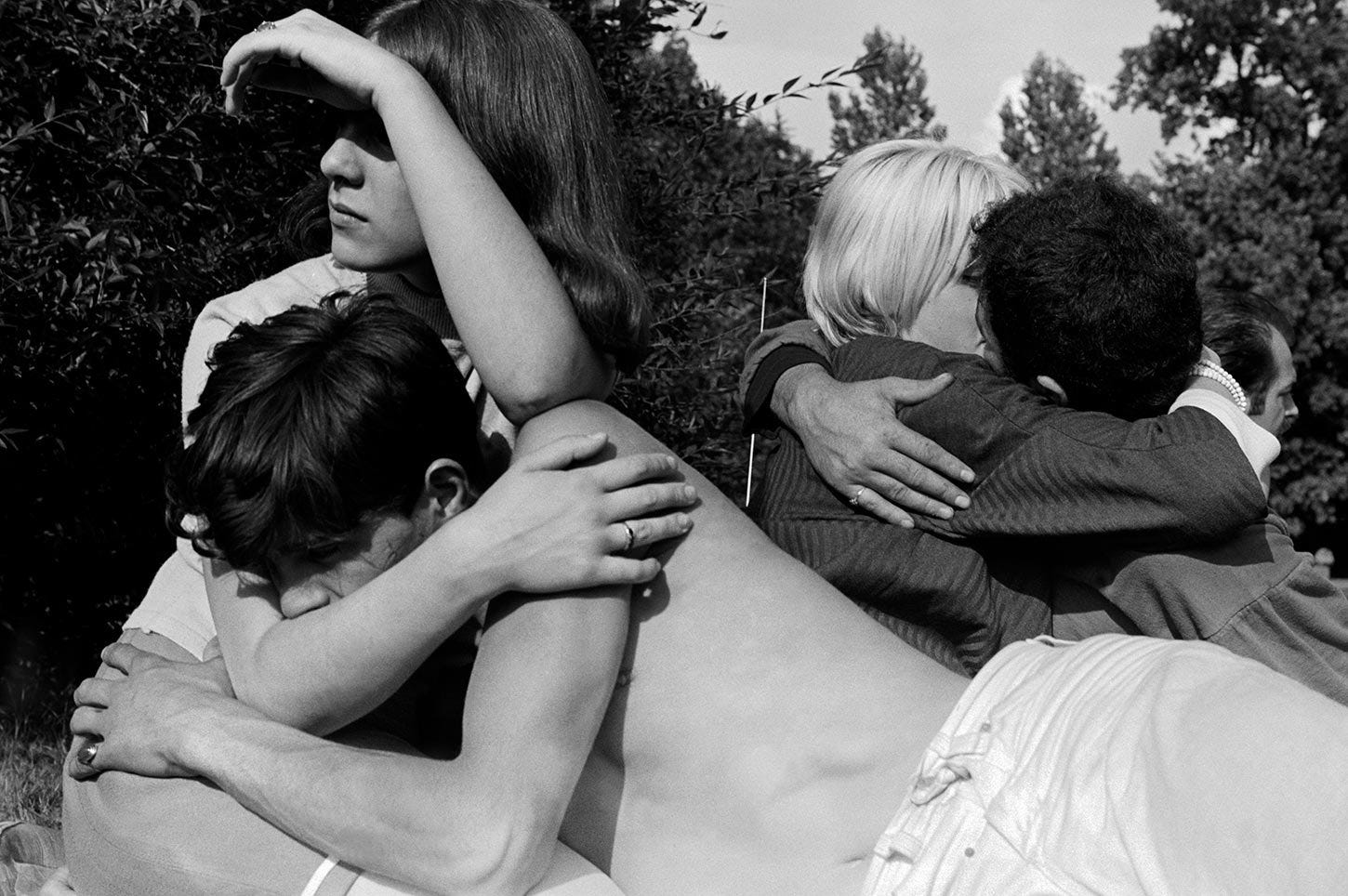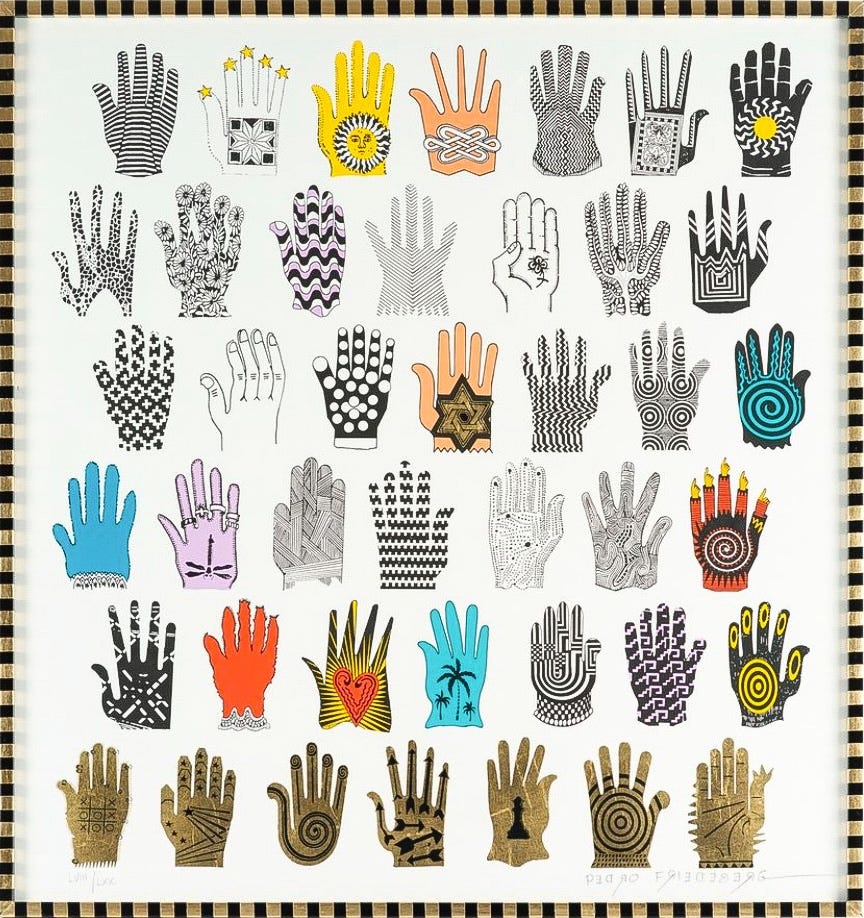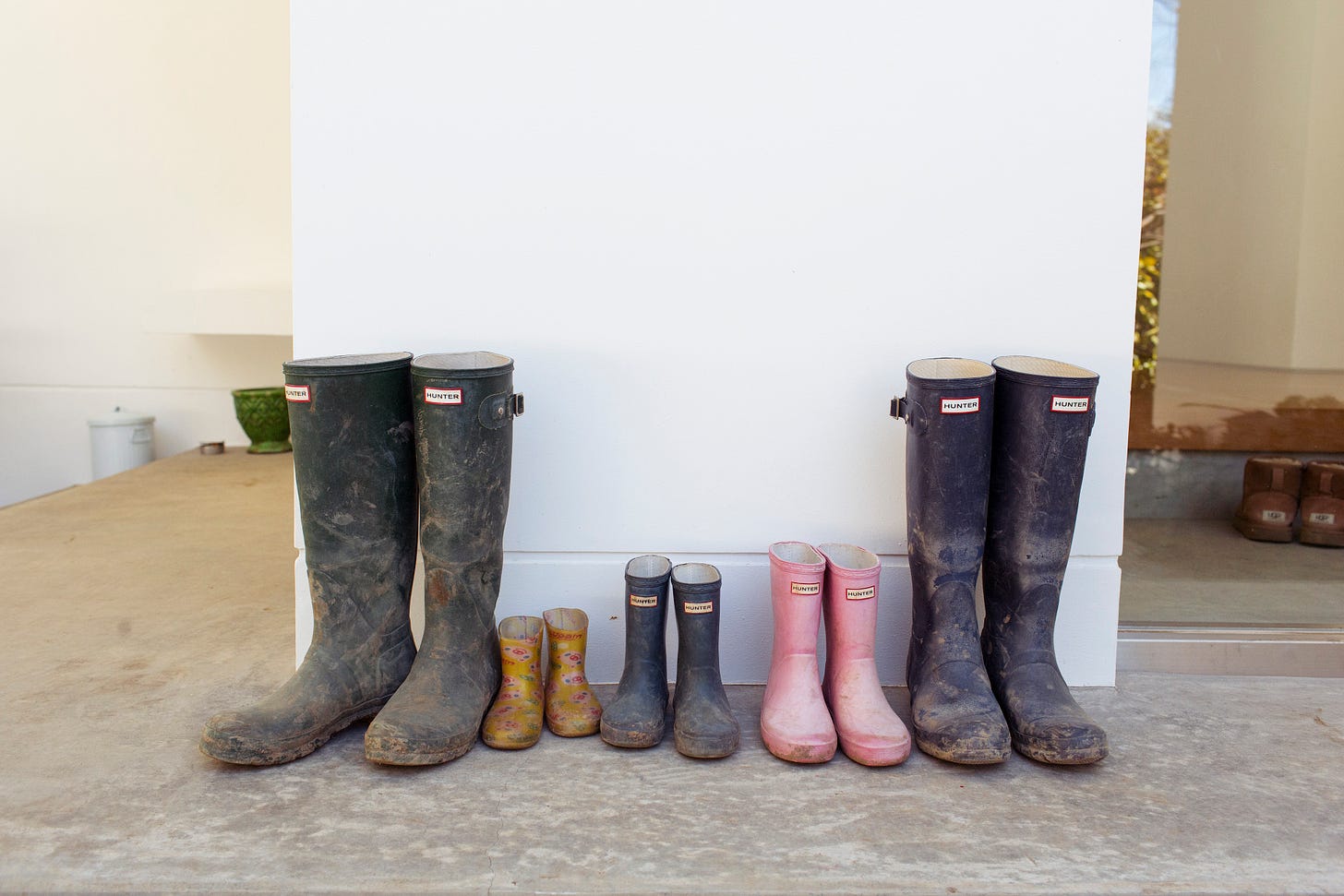Conversation, Henri Matisse 1909
Emotional Subtext
When someone speaks, they’re saying more than just words. There’s often a message beneath the surface - a kind of emotional subtext. Something like:
“The idea of being seen as [x] is important to me.”
Words aren’t simply words - they’re revelations. Little confessions wrapped up in conversation. And if we listen closely, we can meet people in the place they’re actually coming from, not just the one they’re describing.
What we want to be seen as - or feel like - drives what we say and do. The real story is in our motivations, and the difference between helping someone and really reaching them is a shift in how deeply we’re paying attention.
Couples, West Berlin, Leonard Freed 1965
Love
Love might be the most prestigious word in our cultural vocabulary.1
Why do we want it so much?
Because we want to be our best selves - to exercise the finest, kindest, and happiest parts of who we are. We hope another person might help draw that out in us - that they’ll see our potential clearly and help shape it with care.
To be loved is to feel someone is tending to us - pruning and chiseling gently, so we can flourish. And to love someone is to wish to do the same for them.
Little Festival of Hands, Pedro Friedeberg 2000
Family of Strangers
A thought this week: cultural division is really just “bad history.”
Wind back far enough, and the story changes - the differences collapse. We’re not divided by any essence, only by accident and forgetting.
The Tokyo banker, the New York lawyer...
The Brazilian muralist, the fisherman in Kerala…
The French chef, the Cuban school teacher...
The musician in Rabat, the teenage gamer in Jakarta…
The Christian historian, the Yoruban blacksmith…
Strip away the time, the costumes, the countries - and what’s left?
The same eyes. The same heartache. The same search for meaning and understanding. Everyone is a distant cousin. It feels good to remember.
Lambda Chi Alpha, David Hurn 1979
Modes of Being
At social gatherings, I’m often caught between two instincts:
One is to become the group’s quiet camera - to observe without interference, to study the room like a philosopher. The other is to plunge in - to join the rhythm, to adopt my own playful style of participation.
Both feel valid. Both feel wise, in different ways.
Observation offers clarity. Engagement offers connection.
Sometimes I wonder: Which is better?
The deeper practice isn’t choosing one over the other but learning to feel when each is called for. To know when to step back - and when to step in.
At Home in Hayama (Kyohei Ogawa), The Selby 2018
Between Earth & Sky
It’s one thing to feel peaceful in a quiet forest - to meditate beneath the trees, surrounded by stillness and untouched beauty. It’s another thing entirely to hold onto that peace in the middle of everyday life.
Relationships, family dynamics, work tensions, smartphones, breaking news, crowded calendars - this is the true terrain. And it’s harder.
But this is where the work matters most: staying present in the world as it is. Learning how to be human among other humans. Finding serenity in the very heart of the chaos.
“Ideas are clean. They soar in the supernal. I can take them out and look at them, they fit in books, they lead me down that narrow way. And in the morning they are there. Ideas are straight.
But the world is round, and a messy mortal is my friend.
Come walk with me in the mud...”
Hugh Prather
Thank you for reading! If today’s note added a little light to your world, please let me know by tapping the 💛 or sharing it with a friend. Small moments of insight are gifts, and change gathers momentum when ideas travel together.
A Therapeutic Library, The School of Life








As usual, I really pay attention to your writings and they hit me straight on. Your description of LOVE and is one of the best descriptions of practical love that I have read. To repeat from your writtings:
"Love might be the most prestigious word in our cultural vocabulary.
Why do we want it so much?
Because we want to be our best selves - to exercise the finest, kindest, and happiest parts of who we are. We hope another person might help draw that out in us - that they’ll see our potential clearly and help shape it with care.
To be loved is to feel someone is tending to us - pruning and chiseling gently, so we can flourish. And to love someone is to wish to do the same for them."